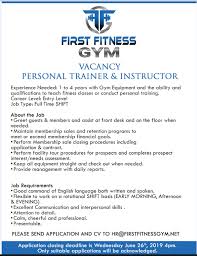
There are many workouts that can help you build muscle quickly. Some are more intense than other, but they all build the same muscle. You need to mix up your workouts. For example, rather than training your chest and back once a day, train both your biceps as well as your triceps that day. Similarly, you should incorporate drop sets into your workouts, which allow you to increase the intensity while limiting your training volume. This will keep you from overtraining your muscles and triggering muscle catabolism.
A combination of exercises will give you a more effective workout
A compound exercise is designed to target multiple muscles groups at once. Compound exercises are great for building muscle mass, strength, and intermuscular coordination. These exercises have a lot of benefits for athletes. They make your body work harder. They also improve coordination, balance, and movement efficiency.
In addition, they help you avoid injuries. A good trainer will be able to show you how compound lifts should be done. You can avoid injury and burnout by using proper technique.
Lifting heavy objects can cause injury to your body.
There are many benefits to lifting heavy weights, but you shouldn't believe the myth that huge weights will make it impossible to build muscle fast. Both heavy and light weights can have similar results. The body's response to these loads is what causes the differences. The body's response to heavy loads is key. They can cause muscle growth and damage. This in turn stimulates the body to generate new muscle cells. Lift heavy weights and do three to six sets of lifting with moderate to long rest periods. This will allow you to get the most from your lifting sessions. You should rest between 30-60 seconds after each set.

This can be good for muscle growth but can cause injury if not done properly. You should avoid pushing yourself too hard after an injury. Even if you haven't sustained a serious injury, you should take some time to rest your muscles and assess how much weight you can lift.
Lifting weights that are heavier causes water retention
Excess water can build up in your muscles when you work out. Weight lifting can result in water retention. Avoid lifting heavy weights. Each exercise should be limited to 12 repetitions. You don't need to reach failure, but you do need to get close.
The good news? Your body will begin to burn fat if your exercise routine is consistent. You might notice a slight fluctuation in your weight each day. This could be due to new muscle. This is normal because your muscles are subject to stress and inflammation while you exercise.
Lifting heavier weights stresses your body
To avoid injury and maximize muscle growth, weightlifting requires that you know the proper lifting technique. Although it is possible to build muscle mass by lifting heavier weights and doing fewer repetitions of the exercise, it is important to take adequate rest to avoid fatigue and chronic stress. To get the right weight lifting routine, you should listen to what your body tells you and consult your doctor.
Start off with lighter weights. Once you feel stronger and more fit, you can gradually increase your weight. Remember that your strength is limited and your progress will be slower when you first start lifting weights. This is due to the fact that most of your muscular wiring will have been set up by the point you hit the top range of reps.

Lifting heavier weights can increase the intensity of your workouts
You are putting your muscles through a greater challenge by lifting heavier weights. You should increase the weight slowly if you are new to lifting. Make the last two or three repetitions of each set as difficult and challenging as possible. This will challenge your body's ability build and repair muscles tissue.
Using heavier weights during your workouts can increase your muscle growth because it causes your muscle fibers to grow more rapidly. Hypertrophy is a term that refers to an increase in muscle tissue's cross-sectional area. Research has shown that training with heavy resistance can promote the growth and development of fast-twitch type-2 muscle fibres.
FAQ
What are cardio exercises?
Cardiovascular exercises are ones that make your heart and lungs work harder. You can do this by running, swimming, biking, rowing and bicycling. These activities help you burn fat and increase your metabolism. These activities can help you keep fit and strengthen your heart.
Is it possible to be too thin?
Yes! Both being underweight or suffering from an eating disorder is unhealthy. It is not normal to be less than your ideal weight. Other symptoms include feeling tired, weak and dizzy.
Are there any exercise I shouldn’t do?
Before you begin any new exercise regimen, make sure to check with your doctor. Some people are unable to exercise due to injuries. Certain activities require special equipment and training. Swimming, for example requires a swimming suit and access to the water.
Do I need to get warm before going out?
Warming up before an activity can reduce muscle soreness, improve performance, and help to prevent injury. There are several ways to warm up. These include running, jumping ropes stretching, running and even cycling. Begin slowly, and then increase the intensity.
Statistics
- In high-income countries, 26% of men and 35% of women were insufficiently physically active, as compared to 12% of men and 24% of women in low-income countries. (who.int)
- Globally, 28% of adults aged 18 and over were not active enough in 2016 (men 23% and women 32%). (who.int)
- Adolescent girls were less active than adolescent boys, with 85% vs. 78% not meeting WHO recommendations of at least 60 minutes of moderate to vigorous intensity physical activity per day. (who.int)
- According to the Centers for Disease Control and Prevention, chronic diseases cause 7 out of 10 deaths in the U.S., and treating chronic diseases accounts for 86% of U.S. healthcare costs. (mana.md)
External Links
How To
How to motivate yourself and get started on a fitness program
A fitness plan is a set or sequence of exercises that are done regularly for a particular time. It helps people to increase muscle mass and toning their bodies. Regular physical activity improves cardiovascular health and reduces blood pressure, cholesterol levels, risk of heart disease and stroke, diabetes, depression, anxiety, stress, obesity, osteoporosis, and many other diseases. Regular exercise has psychological benefits as well. It improves self-esteem, self-confidence, mood, energy, sleep quality, social interaction, and self-confidence.
Why would you choose to make your own fitness program?
To lose weight, improve your health, and become fit, you need to start a fitness program. But why should you follow one? Let's find it out!
What does it mean to follow a fitness routine?
It's a minimum of three times per week that you engage in some form or activity such as running, swimming and yoga. It doesn't have to take you hours to exercise; 30 minutes is all it takes to burn calories, keep you fit, and help you stay healthy. You must stick to your plan. If you miss a day here and there, don't worry--just pick up where you left off next time.
How much time do I need to dedicate to my fitness routine?
It all depends on how busy your schedule is. It takes between 20-30 minutes to complete a moderate workout. Start slowly by exercising for five to ten minutes first if you're just starting out. You can gradually increase the time you exercise once you are comfortable with it.